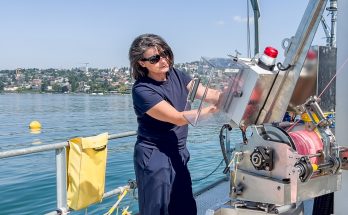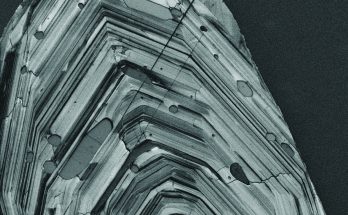Cette publication est également disponible en :
![]() Français
Français
Scientists from the Universities of Lausanne (UNIL), Zurich (UZH) and Bern (UNIBE) have developed an unprecedented simulation which, in just 80 seconds, shows the evolution of glaciers in the Alps over the last 120,000 years.
This complex computer model is the fruit of several years of research and intensive collaboration between climatologists, glaciologists, and geologists.
The last glacial period began around 115,000 years ago, and was punctuated by cold and warmer cycles, resulting in the advance and retreat of glaciers that shaped the landscape of the European Alps and their surroundings, carving out valleys. A new computer model makes it possible to reconstruct this evolution with unprecedented precision. It provides a direct visualization of the phenomena, making them accessible to a wide audience. The fruit of an extensive collaboration by glaciologists, climatologists and geologists from the universities of Lausanne, Bern and Zürich, the research was published in the Journal of Glaciology.
Climatology and glaciology meet
The new numerical model is unique in that, for the first time, it incorporates complex modelling of past climate, carried out by climatologists at the University of Bern.
Glaciologists then used these climatological simulations to inform an ice-flow model, modelling ice accumulation, dynamics and melting, resulting in the most accurate simulation to date. Its unprecedented complexity makes it possible to understand the past distribution of snowfall in Alpine valleys, as well as the evolution of glaciers. “There are geomorphological clues in the field, such as moraines and erratic boulders, which bear witness to the past imprint of glaciers on the lowlands,” explained Guillaume Jouvet, a glaciologist at UNIL’s Faculty of Geosciences and Environment, and first author of the study. “We used these traces to validate our simulation, and everything matched,” he further enthused. “Because of the complexity of the modeling, it took us 6 years to correctly set up our climate and glaciological models, and finally get the right climate and glaciers that match what we observe in reality.”
The limits of modeling
However, the traces left in the field, which act as a gauge, do not allow the model to be verified beyond 24,000 years, the period when glaciers were at their maximum. “This glacial maximum destroyed all previous evidence. Our model is therefore difficult to verify beyond 24,000 years,” explains Guillaume Jouvet.
Putting global warming into perspective
The new simulation will enable us to better understand the past interaction between climate and glacier, and how our landscape was formed. As well as being of scientific interest, it provides a context for global warming. “The image of the different glacial cycles is quite telling”, comments Guillaume Jouvet, “24,000 years ago, we can see that cities such as Lausanne were covered by more than one kilometer of ice. It’s obvious that past cycles, caused by orbital variations of the Earth, are nothing like what’s happening now, where greenhouse gases play an active role in glacier melt”.
What is most striking is the speed of current climate change (barely a few decades) compared with the infinitely long time span of the ice ages.
Guillaume Jouvet
Scientists will be working to further improve the resolution of their model. The current resolution is not sufficiently fine to reproduce the complex topography of high mountains, and this causes a probable overestimation of the ice cover. “We have just started a new project using artificial intelligence, which will be used to speed up our models and reach a necessary resolution of 200m,” explains Guillaume Jouvet.
Reference
- G. Jouvet, D. Cohen, E. Russo, J. Buzan , C. C. Raible , W. Haeberli , S. Kamleitner , S. Ivy-Ochs, M. A. Imhof , J. K. Becker , A. Landgraf and U. H. Fischer, Coupled climate-glacier modelling of the last glaciation in the Alps, Journal of Glaciology.



